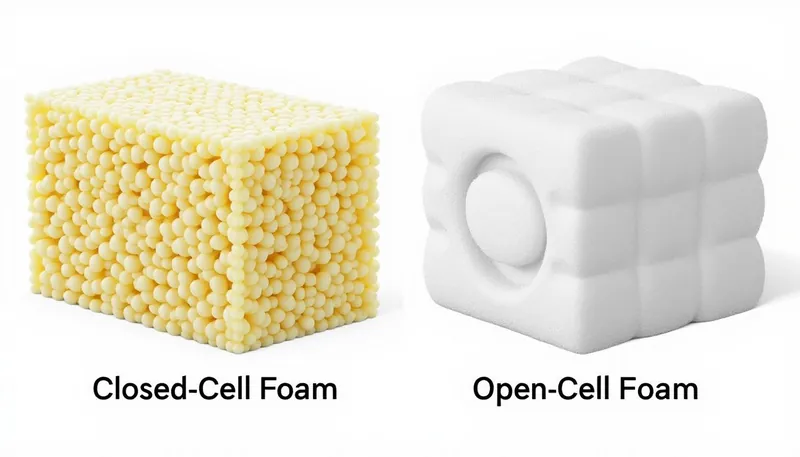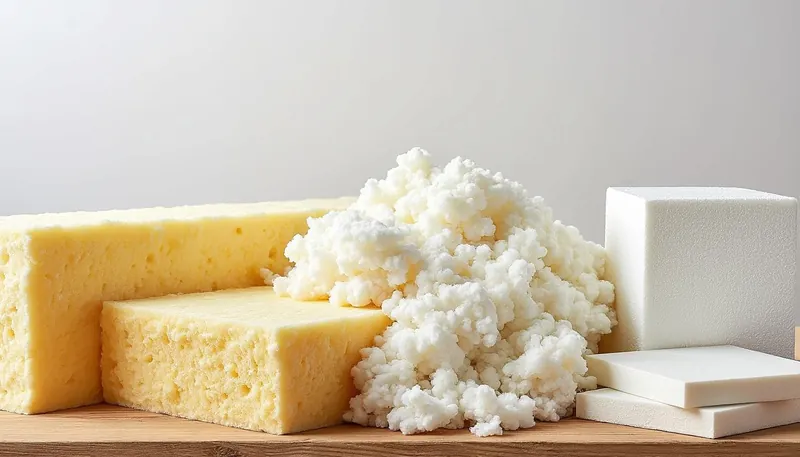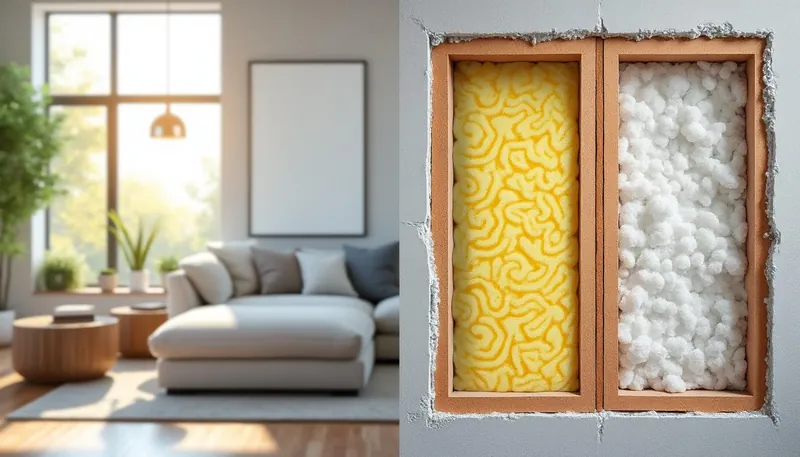In today’s world of energy efficiency and sustainable living, making the right choice for insulation has never been more critical. When it comes to keeping our homes comfortable and our energy bills manageable, the options on the table include both traditional and modern methods. Battling between foam insulation and its traditional counterparts might feel a bit like choosing between a sleek new sports car and a reliable, albeit slightly outdated, sedan. Do you go with the flashy new foam that promises high performance but at a higher price, or stick with the dependable traditional materials that have served us well over the years? This guide will explore these two distinct approaches to home insulation and provide insights into which might be the best fit for your needs. Let’s dive deeper into the world of insulation!
In brief:
- Foam insulation boasts higher thermal resistance with impressive R-values of 6 to 7 per inch. ⚡️
- Traditional insulation options such as fiberglass and cellulose are generally more affordable. 💰
- Foam offers outstanding air sealing and moisture resistance, making it a strong contender for energy efficiency. 🛡️
- Installation of foam insulation can be tricky and may require professional help. 🛠️
- Real homeowner experiences highlight long-term savings with foam insulation despite higher upfront costs. 🏠
Unraveling Foam Insulation: What Makes It Stand Out?
Foam insulation is like that swanky new gadget everyone’s talking about—it’s a game changer in more ways than one. At the core of its appeal are its impressive thermal properties. Unlike traditional materials, foam insulation boasts an R-value that can range between 6 to 7 per inch. For the uninitiated, this means it’s super effective at keeping your home’s warmth in during the winter and the summer heat out—kind of makes you feel like you’ve cloaked your house in a protective energy-saving hug.
But what exactly is foam insulation? Basically, it comes in two types: closed-cell foam and open-cell foam. Closed-cell foam is the resilient warrior against moisture and is often used in areas prone to dampness, such as basements. It creates a rigid, moisture-resistant barrier, ideal for enhancing the energy efficiency of homes. On the flip side, open-cell foam offers excellent soundproofing due to its porous structure, and is perfect for attics and interior walls where you want to keep unwanted noise at bay while promoting proper air circulation.
Advantages of Foam Insulation:
- Higher thermal resistance compared to traditional materials. 🎯
- Reduces heating and cooling costs by as much as 50%, making that monthly bill a little friendlier! 💵
- Durability—unlike traditional materials that might sag or degrade, foam maintains its shape and effectiveness. ⏳
- Helps repel pests; some critters find crawling over foam less appealing than traditional materials. 🐜
| Characteristic | Closed-cell Foam | Open-cell Foam |
|---|---|---|
| R-Value | 6-7 per inch | 3.5-4 per inch |
| Moisture Resistance | Excellent | Moderate |
| Soundproofing | Moderate | Excellent |
| Cost per board foot | $1.00 to $3.00 | $0.50 to $1.50 |
Foam insulation therefore represents a significant step forward in insulation technology. Dish out a little more upfront, and it could pay dividends in energy savings down the line.

Examining Traditional Insulation Materials: A Closer Look
Now let’s switch gears and have a heart-to-heart about traditional insulation materials. Whether you’ve done some home renovations or are looking to insulate a new build, you’ve most likely stumbled upon options like fiberglass, cellulose, and mineral wool—the old reliable pals that have been in the game for a while. Each type comes with its own quirks and benefits, and let’s face it, they’re not going anywhere anytime soon.
Starting with fiberglass insulation, this is the classic go-to option made of fine glass fibers. It’s often neat, cost-efficient, and relatively easy to install. Pricing usually sits between $0.40 to $1.50 per square foot, making it budget-friendly for most homeowners. However, handling fiberglass can be a bit prickly—it can irritate the skin and respiratory system if not handled correctly, so caution is advised.
Then there’s cellulose insulation, which is like your favorite eco-friendly store alternative but in insulation form. Made from recycled paper treated for fire resistance, it has R-values around 3.5 to 3.7 per inch. While it’s not as effective as foam in the thermal resistance department, it’s more environmentally friendly, and the installation process can be a breeze if you’re going the DIY route. However, it’s worth noting that cellulose can settle over time, which may affect its insulation capability.
Finally, we have mineral wool, also known as rock wool, which is made from volcanic rock and is praised for its fire resistance. It provides R-values between 3.0 to 3.3 per inch and not only helps in keeping cozy but is naturally resistant to water and pests as well.
- Fiberglass Insulation: Budget-friendly, R-value of 2.9 to 4.3 per inch. 🏷️
- Cellulose Insulation: Environmentally friendly, R-value of 3.5 to 3.7 per inch. 🌿
- Mineral Wool Insulation: Fire-resistant, R-value of 3.0 to 3.3 per inch. 🔥
| Type of Insulation | Material | Cost per Square Foot | R-Value |
|---|---|---|---|
| Fiberglass | Glass Fibers | $0.40 – $1.50 | 2.9 – 4.3 per inch |
| Cellulose | Recycled Paper | $0.50 – $1.50 | 3.5 – 3.7 per inch |
| Mineral Wool | Volcanic Rock | $0.50 – $1.50 | 3.0 – 3.3 per inch |
While traditional insulation methods might not be as cutting-edge as foam, they remain steadfast choices that have proved their worth over the years.

Performance Comparison: Which Insulation Prevails?
When it comes to insulation performance, two primary factors rule the roost: thermal performance and moisture resistance. If foam insulation is like the super athlete, traditional materials are the tried-and-true champions. Let’s break down how they stack up against one another, shall we?
Thermal Performance
Foam insulation stands tall with R-values that blow traditional options out of the water. Its remarkable R-value of 6 to 7 per inch allows your home to maintain a controlled environment, keeping you comfy in both summer and winter months. The Department of Energy found that homes outfitted with foam insulation can enjoy energy savings up to a whopping 50% on heating and cooling costs. What’s not to love about that?
In comparison, traditional insulation often offers respectable but lower R-values. Fiberglass typically ranges from 2.9 to 4.3 per inch, while cellulose and mineral wool follow close behind. So, while traditional materials serve a valuable purpose, they may not give you the bulk savings that foam can.
Moisture Resistance
When we shift our focus to moisture resistance, foam insulation is the clear frontrunner yet again. Closed-cell foam, in particular, works wonders in humid areas and detours dampness away effectively. This is essential because a wet environment can lead to mold issues over time—a scenario you want to avoid at all costs.
Traditional insulation, particularly fiberglass, behaves quite differently. If it encounters moisture, it tends to absorb it, losing its efficiency and inviting mold to the party. Not an ideal situation for homeowners looking to safeguard their investments!
| Performance Indicator | Foam Insulation | Traditional Insulation |
|---|---|---|
| Thermal Resistance (R-Value) | 6-7 per inch | 2.9-4.3 per inch |
| Moisture Resistance | Excellent | Poor to Moderate |
| Energy Savings Potential | Up to 50% | None specified |
This performance comparison undeniably tilts the scale in favor of foam insulation. If energy efficiency and resistance to moisture issues are on your checklist, foam insulation is the heavyweight champion!
Cost Analysis: Weighing Immediate Vs. Long-Term Savings
Ah, the age-old struggle of investing in your home—do you shell out for those high-end features now and save in the long term, or play it safe with more affordable options? Foam insulation may feel like a splurge, but digging into the numbers reveals a deeper story.
When it comes to upfront costs, foam insulation generally runs between $1.00 to $3.00 per board foot, which is significantly higher than that of traditional options. In contrast, traditional insulation materials like fiberglass and cellulose are available for around $0.40 to $1.50 per square foot. 📊 This makes the decision seem straightforward: why wouldn’t you opt for the cheaper solution?
However, the critical factor lies within the long-term savings foam can offer. In many cases, foam insulation reduces energy bills by up to 50%. The math begins to shift when considering the total cost of ownership. A study from 2023 highlighted that homes insulated with foam typically see a return on investment within 3-5 years due to the drastic drop in heating and cooling costs.
- Foam Insulation: $1.00 – $3.00 per board foot 💲
- Traditional Insulation: $0.40 – $1.50 per square foot 💵
- Potential Energy Savings from Foam: Up to 50% 🌡️
So, when considering both initial expenses and future savings, foam insulation emerges as a wise investment rather than just an expensive choice.
| Cost Comparison | Foam Insulation | Traditional Insulation |
|---|---|---|
| Initial Cost (per board foot) | $1.00 – $3.00 | $0.40 – $1.50 |
| Average Energy Savings | ~50% on bills | Varies |
| Return on Investment Period | 3-5 years | N/A |
Real-World Experiences: Homeowners Speak
When it comes to making decisions about home improvements, sometimes it’s best to hear from those who have walked the path themselves. Numerous homeowners have made the switch from traditional insulation to foam, and the stories are both eye-opening and enlightening!
Take the Smiths, for example. After years of struggling with rising energy costs during winter, they decided to install foam insulation in their attic and basement. They reported a significant decline in their energy bills by nearly 40% compared to the previous year—a drastic change that paid for their investment within a few years. Their comfort level also soared, thanks to the airtight seal provided by foam.
On the other hand, there are mixed reviews from those who went the traditional route. The Johnsons opted for fiberglass insulation during their last renovation, and although it was budget-friendly, they felt chilly drafts creeping through their home as it settled over time. This wasn’t what they expected from their “newly insulated” house, and prompted them to consider foam insulation for future upgrades, especially given the issues with moisture.
- Smith Family: 40% drop in energy bills after switching to foam! 🏡💰
- Johnsons: Disappointment with fiberglass settling and drafts 👎
- General Feedback: Overall satisfaction with foam insulation’s performance 🥳
Homeowners’ experiences often highlight the importance of researching insulation options thoroughly before deciding. While everyone’s situation is unique, many express gratitude for investing in foam insulation, reporting greater comfort and savings in energy bills!
How much does foam insulation cost compared to traditional options?
Foam insulation typically costs between $1.00 and $3.00 per board foot, while traditional options like fiberglass cost around $0.40 to $1.50 per square foot. However, foam can lead to considerable energy savings.
Is foam insulation worth the investment?
Many homeowners find the investment in foam insulation worthwhile due to its high R-value and potential to reduce energy bills by up to 50%. The long-term savings can outweigh initial costs.
What types of foam insulation are available?
There are primarily two types of foam insulation: closed-cell and open-cell. Closed-cell foam is moisture resistant, whereas open-cell foam allows for better soundproofing.
Does traditional insulation perform as well as foam?
While traditional insulation materials can provide decent R-values, they generally fall short compared to foam insulation in areas cover performance, moisture resistance, and energy efficiency.
Can I install foam insulation myself?
DIY installation of foam insulation can be tricky, requiring precision. Professional installation is often recommended to avoid common pitfalls.


